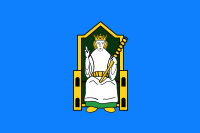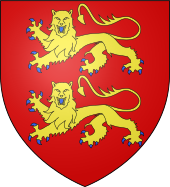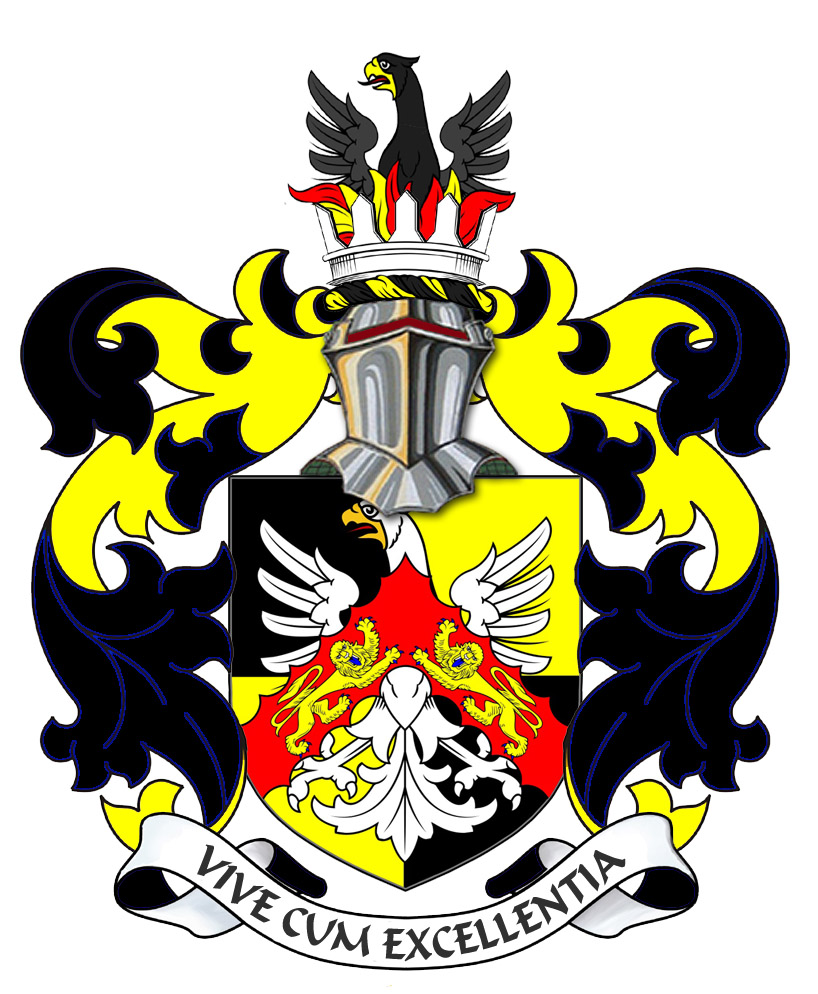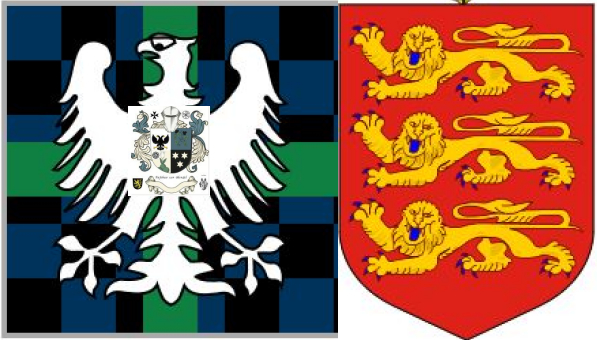Baron Longford Baron Annaly - Feudal Barons




Norman Channel Island & Guernsey HistoryIt has been considered that the island had occasional visits by hunting nomads as far back as 5,500 B.C. The tomb found at L’Ancresse has been dated circa 4,500 BC. It is a pre-megalithic grave that must be included among the oldest in Europe. Other remains of a fertility religion such as Dolmens and Menhirs are dated as far back as 4,000 and 3,000 B.C. The exact date when a permanent settler arrived to the island, probably in the form of a farmer with domestic cattle, sheep and goats as opposed to the seasonal nomadic hunter has not been completely established. During the first centuries (A.C.) the Bailiwick of Guernsey saw the Roman domination and collapse. It was
a part of the administrative unit based on Constantia (Countances), Province of <<Gallia Lugudensis
Secunda>>. The coming of Christianity is attributed to St. Martin de Tours, who died between 396 and 400 A.D.
After the Roman domination there followed a period of frequent invasions by Norsemen. The Charlemagne descendant King Louis the Pious suffered severe attacks from Norsemen in the 830s. The Norsemen caused great trouble to the Frankish King in Normandy (then known as Nuestria). The islands were ecclesiastically subordinated to the Bishop of Countances from the sixth century, but even this Bishop found it prudent for about a century to reside in Rouen as the pagan Norsemen so effectively subjugated the Cotentin region and near islands. It was not until 1049 that effective ecclesiastical control of Guernsey by the see of Countances could have been established.
The islands come into English possession. The Norman period In 1204 King John lost Continental Normandy. This started a long period of disputes between France and England over the islands with frequent French raids over the archipelago. It also presented to the Seigneurs to the alternative of rendering homage to the King of France and thus losing the properties on the island or rendering homage to the King of England (now no longer Duke of Normandy), and thus losing their Continental properties. The islands were invaded by the French in 1338, who held some territory until 1345. Edward III of England granted a Charter in July 1341 to Jersey, Guernsey, Sark and Alderney, confirming their customs and laws to secure allegiance to the English Crown. Later, King Richard II of England reconfirmed in 1378 the Charter rights granted by his grandfather, followed in 1394 with a second Charter granting, because of great loyalty shown to the Crown, exemption for ever, from English tolls, customs and duties.
The islands after the King of England Lost the Normandy Dukedom
The Ceremony of Homage: Many Seigneurs still swear homage to the crown, directly to the King or to the King’s representative. It is performed three times a year at the Royal Court after St. Maurus’ day (January 15th), Easter Chief Pleas (Monday after Easter week) and after the Feast of St. Michael (Monday after Michael’s Day). This obligation holds only for the 17 seigneurs of certain fiefs at the time (XIII century) that the obligation began [*].
The XIV century was the time for five General Eyre and wars, including a French occupation of the Bailiwick (1338-1340) and the start of the 100 Years War. This conflict left some effects over the islands including the Castle-Cornet taken and re-taken by France and England. In 1360 by the Treaty of Bretigny France abandoned the claims to the islands in return for English recognition of the Bishop of Coutances. This dependence was interrupted during the Papal schism (1378-1417). Papal Neutrality to Island Fiefs
Recent Centuries
18th Century Grenadier's mitre worn by Thomas Le Patourel. The only known Guernsey Militia example to survive. Castle Cornet museum.
Today, The Channel Islands fall into two separate self-governing bailiwicks, the Bailiwick of Guernsey and the Bailiwick of Jersey. Both are British Crown dependencies, and neither is part of the United Kingdom. Guernsey has roughly 63,026 inhabitants and 23 private Ancient Fiefs. The Isle of Man and the Bailiwicks of Jersey and Guernsey are not part of Great Britain, they are not part of the United Kingdom and neither are they part of the European Union. They are self-governing British Crown dependencies Guernsey and the Channel Islands fall into two separate self-governing bailiwicks, the Bailiwick of Guernsey and the Bailiwick of Jersey. Both are British Crown dependencies, and neither is part of the United Kingdom. They have been part of the Duchy of Normandy since the tenth century, and Queen Elizabeth II is often referred to by her traditional and conventional title of Duke of Normandy. However, pursuant to the Treaty of Paris (1259), the Queen governs in her right as The Queen (the "Crown in right of Jersey",and the "Crown in right of the république of the Bailiwick of Guernsey"), and not as the Duke. This notwithstanding, it is a matter of local pride for monarchists to treat the situation otherwise: the Loyal Toast at formal dinners is to 'The Queen, our Duke', rather than to 'Her Majesty, The Queen' as in the UK |
Lords Paramount Ireland About Longford Market & Fair Chief Captain Kings Forces Lord of the Pale Commissioners of the Peace Tenures Abolition Act 1662 - Rights to Sit in Parliament Law of Ireland Chief and Captainship of The Annaly List of Townlands of Longford Annaly The Seigneur English Pale Chief of the Annaly Lord of St. Brigit's Longford Abbey Est. 1578 Kings of Hy Niall Colmanians Seneschal of Meath Court Barons News Irish Kingdoms Lordships of Granard Fishing & Dams Rights Rights of Lords & Barons Datuk Seri Baliwick of Ennerdale Moneylagen Feudal Barons Styles and Dignities Lord Baron Longford Baron de Delvyn Longford Map Lord Baron of Delvin Baron of Temple-Michael Baron of Annaly Kingdom Annaly Lord Conmaicne Baron Annaly Order of Saint Patrick Baron Lerha Granard Baron AbbeyLara Baronies of Longford Princes of Conmhaícne Angaile or Muintir Angaile Baron Lisnanagh or Lissaghanedan Baron Moyashel Moiety of Ardagh Baron Rathline Abbeys of Longford Grants to Delvin Baron Inchcleraun HOLY ISLAND Quaker Island Longoford CO Abbey of All Saints Hereditaments Kingdom of Uí Maine Baron Dungannon Baron Monilagan - Babington Lord Liserdawle Castle Baron Columbkille Kingdom of Breifne or Breny Baron Kilthorne Baron Granarde Count of Killasonna Baron Skryne Baron Cairbre-Gabhra AbbeyShrule Fiefs of the Islands Feudal Westmeath The Island Lords Fief Worship Channel Island History Fief Blondel Fief Blondel Merchandise Events Blondel and King Richard Fief Coin Feudal Guernsey Titles The Feudal System Flag & Arms Castle Site Map Disclaimer Blondel Myth Dictionary Honorable Colonel Mentz Order of St. Columba
Feudal Baron of Longford Annaly - Baron Longford Delvin Lord Baron &
Freiherr of Longford Annaly Feudal Barony Principality Count Kingdom of Meath - Feudal Lord of the Fief
Blondel of the Nordic Channel Islands Guernsey Est. 1179 George Mentz
Bio -
George Mentz Noble Title -
George Mentz Ambassador - Order of the Genet
Knighthood Feudalherr - Fief Blondel von der Nordischen
Insel Guernsey Est. 1179 * New York Gazette ®
- Magazine of Wall Street - George
Mentz - George
Mentz - Aspen Commission - Ennerdale - Stoborough - ESG
Commission - Ethnic Lives Matter
- Chartered Financial Manager -
George Mentz
Economist -
George Mentz Ambassador -
George Mentz - George Mentz Celebrity -
George Mentz Speaker - George Mentz Audio Books - George Mentz Courses - George Mentz Celebrity Speaker Wealth
Management -
Counselor George Mentz Esq. - Seigneur Feif Blondel - Lord Baron
Longford Annaly Westmeath
www.BaronLongford.com * www.FiefBlondel.com |




Commissioner George Mentz - George
Mentz Law Professor - George
Mentz Economist
George Mentz News -
George Mentz Illuminati Historian -
George Mentz Net Worth
The Globe and Mail George Mentz
Get Certifications in Finance and Banking to Have Career Growth | AP News